Is nuclear power fizzling out in Florida? Not so fast... why it still has plenty of juice
In the 70s, Florida had three nuclear power plants. Today, Florida is down to two.
Those two, in St. Lucie at Jensen Beach and Turkey Point in Homestead, are producing energy through four reactors. The third plant is being decommissioned, a process that has already stretched 15 years.
But don't count nuclear out in Florida or the rest of the country. Florida Power & Light (FPL), which is the largest U.S. electric utility by residential customers, owns the two operational nuclear plants and has applied to continue their licenses for nearly 30 more years.
Touted in the 60s and 70s, but rejected in the 80s and 90s after two large disasters (Three Mile Island and Chernobyl) and a move toward natural gas, nuclear power is seeing continued usage and renewed support and research.
FPL and its parent company are working to cut carbon emissions and nuclear energy plays a big part because it doesn't emit greenhouse gas emissions. It is considered a must-use, along with solar and wind energy.
“We’re planning to be emissions free by 2045,” said Bill Orlove, senior manager, generation communications, marketing and communications, NextEra Energy, the parent company of FPL.
“Nuclear plays a key role whether in a utility or a state that wants to go emission free,” Orlove said. “It’s very difficult to do that without having nuclear in the mix. … It's that constant. You are not relying on the winds. You aren't relying on the sun. It can operate reliably 24/7." Meanwhile, FPL is expanding its solar power as well.
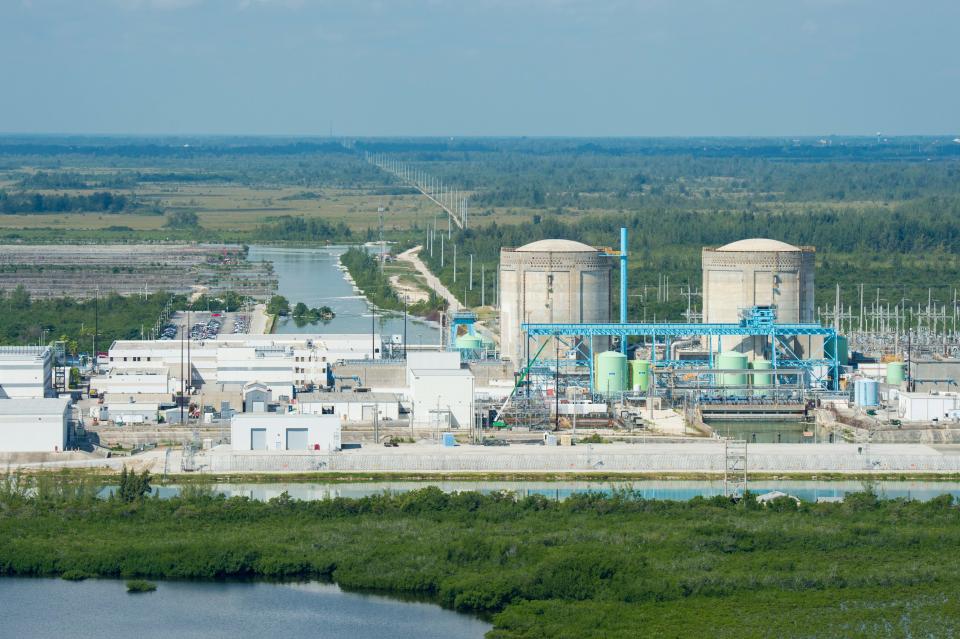
What's happening with nuclear in Florida
FPL has applied to continue usage of both of its Florida nuclear plants through 2052 and 2053.
A new reactor — the first since 2016 — started operation in Georgia in 2023. A new nuclear power plant in Tennessee, will be the first built in 34 years.
A Gallup Poll conducted in March shows the highest percentage in favor of using nuclear energy since 2012.
Young adults are going into nuclear engineering to work at power plants.
Nuclear energy is a key component of the Biden administration’s clean energy plan for the U.S.
The U.S. was among more than 20 countries in December that during the World Climate Action Summit in Dubai launched the Declaration to Triple Nuclear Energy. The declaration recognizes the key role of nuclear energy in achieving global net-zero greenhouse gas emissions by 2050 and keeping the 1.5-degree goal within reach.
In 2020-2021, nuclear engineering was the 253rd most popular major nationwide with 864 degrees awarded, according to data collected by College Factual. This was a 9.7% reduction in nuclear engineering degrees awarded over the prior year's total of 948.
Florida's nuclear plants: Turkey Point and St. Lucie remain in operation
Duke Energy owns the Florida plant being decommissioned. Located in Crystal River, the plant was in operation from 1977 to 2009. It was shut down for refueling and replacement of its steam generators and never started back up again.
During inspection, a crack was found in the outer layer of the containment building's concrete wall and during exploration found or created more cracks. Finding it too expensive to repair, Duke decided to decommission the plant nearly 50 years sooner than planned. The company hired Accelerated Decommissioning Partners in 2019 and received approval from the U.S. Nuclear Regulatory Commission (NRC) in 2020. Duke says the plant is expected to be fully decommissioned by 2027.
The dry storage system for spent fuel will be in use for another 10 years after that, according to Duke. Nuclear plants initially store spent fuel in steel-lined concrete pools surrounded by water. It is later removed from the pools and placed into dry storage casks that are made of steel and concrete or other materials used for protective shielding. All of this is done on site at each nuclear plant. A plan started in the 80s to create a national nuclear waste site in Nevada at Yucca Mountain was defunded in 2011 without it ever having been established.
FPL operates Turkey Point in Homestead and St. Lucie nuclear plants. These plants, with two reactors each, have been in operation since the 70s.
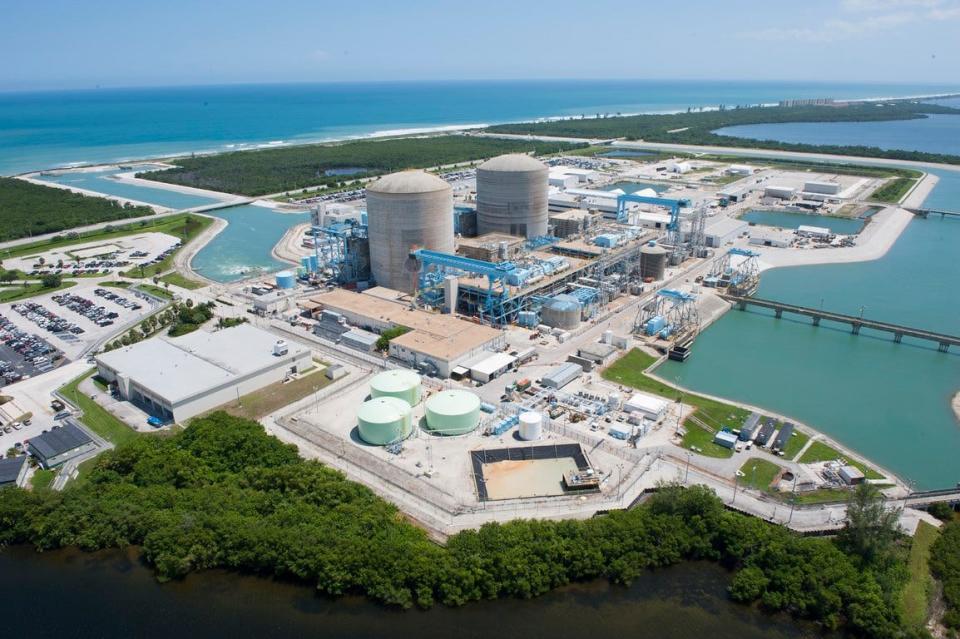
"They are constantly being upgraded," Orlove said. "They are constantly being maintained."
Together, the two plants produce more than 3,000 megawatts of clean, emission-free energy — enough to power nearly 1.9 million homes. They use surrounding bodies of water to cool the steam used to run the turbines and create energy instead of cooling towers that release steam that many people associate with nuclear power plants.
Check out how nuclear plants work here.
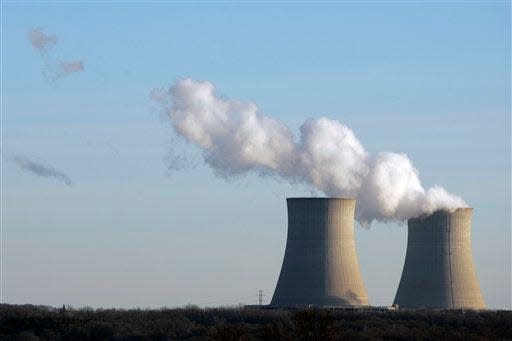
FPL anticipates that the Nuclear Regulatory Commission will rule on Turkey Point’s license renewal application next year and St. Lucie’s application will be decided in 2025, Orlove said.
NextEra and FPL started their plan to be emissions free first, but the U.S. has set similar goals for the entire country.
U.S. sets goals that include nuclear energy in 2023
President Joe Biden announced goals in 2023 to reduce the country’s greenhouse gas emissions 50%-52% below 2005 levels in 2030, reaching 100% carbon pollution-free electricity by 2035 and achieving a net-zero emission economy by 2050.
Net zero means that any emissions are balanced by absorbing an equivalent amount from the atmosphere.
"Net zero means cutting greenhouse gas emissions to as close to zero as possible, with any remaining emissions re-absorbed from the atmosphere, by oceans and forests for instance," according to the United Nations.
At the U.N. Climate Conference in December in Dubai, the Biden Administration announced initiatives, including a $3 billion pledge to the Green Climate Fund. Among the initiatives, many alongside other countries, were the following:
Reduce methane emissions from oil and gas operations.
Triple Nuclear Energy Capacity Globally by 2050. The United States co-led a coalition of over 20 countries from four continents that launched a Declaration to Triple Nuclear Energy from 2020 levels by 2050 globally and invited shareholders of international financial institutions to encourage the inclusion of nuclear energy in energy lending policies.
Jump Start Small Modular Reactor (SMR) Deployments Around the World.
Advancing a Secure Nuclear Fuel Supply Chain – Building on our pledge announced in April 2023 at the G7 meeting in Sapporo, Japan, the United States, Canada, Japan, France, and the United Kingdom will work to mobilize at least $4.2 billion in government-led investments to enhance their collective enrichment and conversion capacity over the next three years. These investments will catalyze private sector finance to build out safe, secure, and reliable global nuclear energy supply chains.
Start a U.S. Fusion Energy International Partnership Strategy. This strategy will support the timely development, demonstration, and deployment of commercial fusion energy in strategic areas like research and development and harmonization of regulatory frameworks.
The U.S. Department of Energy is scaling up hydrogen technologies to support the global transition to clean energy, including by ramping up investments in research, development, and demonstration to pursue the Hydrogen Shot goal of reducing the cost of clean hydrogen to $1/kg by 2031.
New technology and new reactors
One of two planned new reactors — the first built from scratch in the U.S. since 2016 — started operation in Georgia in 2023. A new nuclear power plant in Tennessee will be the first built in 34 years. All three reactors use or will use new technology many say is safer, takes up less land and is less expensive to build.
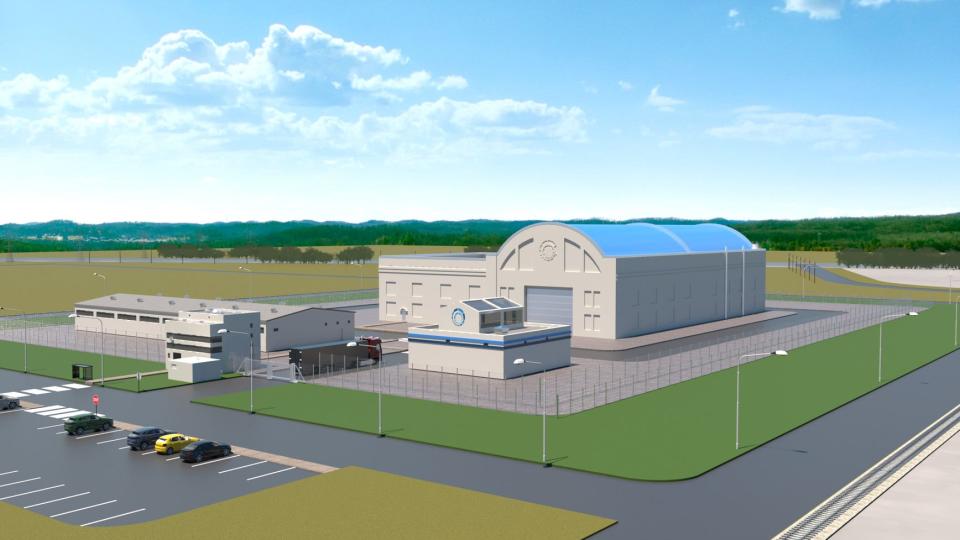
Going smaller is an option — some power producers are building small modular reactors. These are advanced light water reactors with an electric generating capacity of up to 300 megawatts versus about 1,000 for traditional nuclear reactors.
Their designs are based on existing commercial light water reactor technology but are generally small enough to allow major reactor components to be placed in a single pressure vessel, eliminating the need for primary circuit pipework with the intention of enhancing safety and reliability.
Also, the components can be manufactured in factories and shipped to a site to be put together — think about how modular homes are built.
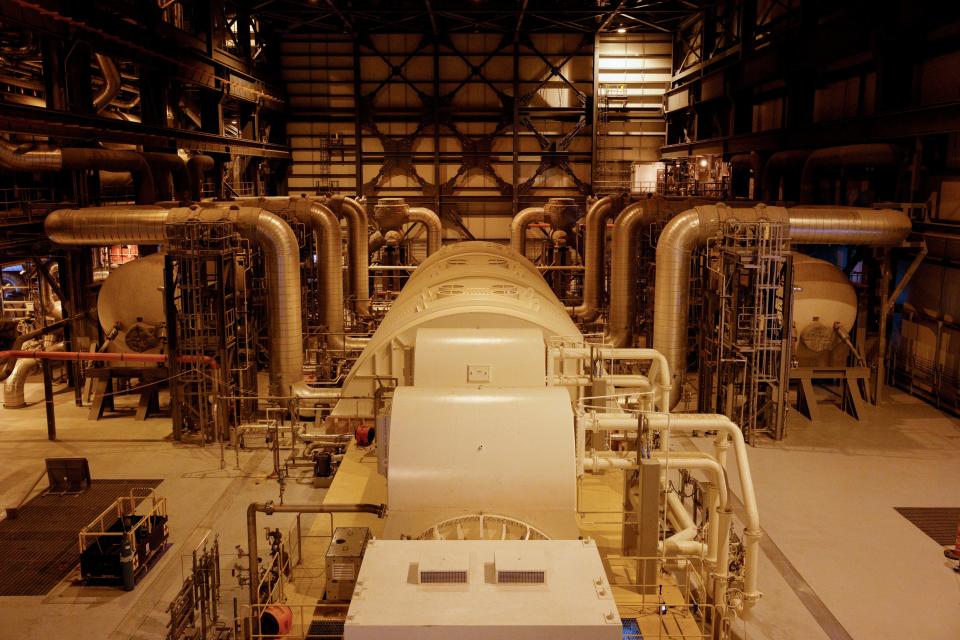
The Tennessee Valley Authority is building such a reactor with the help of GE Hitachi Nuclear Energy, Ontario Power Generation in Canada and Synthos Green Energy in Poland.
In Florida, FPL is paying close attention to these smaller plants.
"Right now, certainly we're looking at it, but the costs have to come in line because we need to supply clean reliable energy" FPL's Orlove said. And it needs to make sense for customers."Small modular reactors aren't there yet," he said. "We're still looking at as a possibility in the future but we aren't committing to it."
NuScale Power Cooperation, the first company in the United States to secure approval for the design of a small modular nuclear reactor, and the Utah Associated Municipal Power Systems (UAMPS) ended their contract in November for a six-reactor project that was to be built by 2030. The companies cited concerns about low subscription for the plant's power.
Despite the deal cancelation, NuScale chief executive officer said he was still "bullish" on small modular reactors, known as SMR, which also is the company's ticker symbol on the New York Stock Exchange.
More: Arizona approves key environmental permit for uranium mine near Grand Canyon
"NuScale is focused on deploying our SMR modules and are poised to expand into new markets, applications and capabilities," President and CEO John Hopkins said on the company's third quarter conference call Nov. 8.
University of Florida nuclear engineering senior Weston Herman said SMRs "would be great in certain applications."
"They are ultra safe because they are scaled down," he said in a phone interview. "I hope that people learn about them more."
Studying nuclear energy: A UF student learns from the school's nuclear reactor
Lofty emissions goals and new nuclear technology require nuclear engineers and younger people to go to school to become experts.
Herman wants to spread the word about the importance of nuclear energy and get more people involved.Herman worked for FPL at the St. Lucie plant last summer.

He didn’t know a lot about nuclear science when he decided to major in it but what he did know was that it combined emissions free energy and that would help with climate change.
“I thought that was very cool — it would be an awesome thing to be a part of,” Herman said. “I’m very much wanting to be sustainable and try to make a difference in the world.”
When Herman graduates, he said, he wants to work in a nuclear plant like he did last summer, and probably in Florida. At St. Lucie, Herman worked with other engineers and helped write a report on a project for the company. He didn't give details because of the specificity to the plant.
“I really enjoyed writing. It helped me understand,” he said. Herman also did what he called walk downs with other engineers, maintenance employees and nuclear operators “to see the daily life that goes on and what needs to be done.”
More: Georgia Power wins approval to pass on $7.5 billion in Plant Vogtle costs to customers
Herman said he was impressed with the people who work at the plant.
“These people who work there are some of the most intelligent people I’ve met,” he said. “You’re not going to find a place with more knowledgeable people on a topic. They know what they are doing, and they know it well. I could talk to anybody about something that wasn’t clear to me. It was really awesome.”
Herman said there’s very little detailed information available to learn about becoming a nuclear engineer and that until he was an upper classman, he still didn’t learn much about his chosen field.
He learned that the University of Florida has a reactor on campus and engineering students can get certified to operate it.“It’s really old but it’s in great condition," Herman said. “It’s really small — 100 KW thermal. It produces a little heat. It is used for heat. They call it the tea kettle. It basically just boils water.”
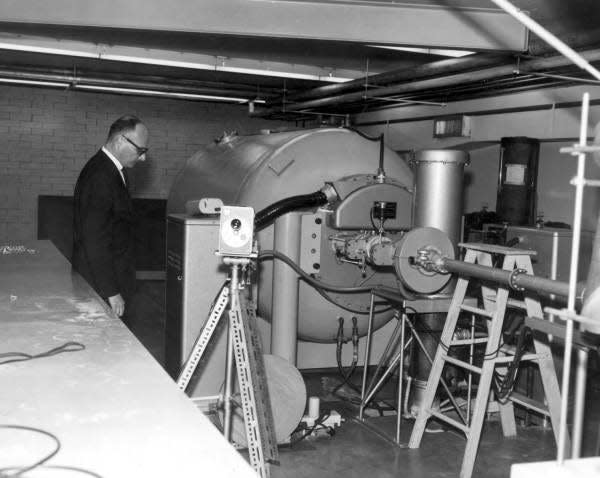
University of Florida’s reactor is one of about 30 on campuses throughout the U.S., according to the U.S. Nuclear Regulatory Commission. These 30 used for training and education are in addition to the 94 commercial reactors the NRC regulates.
More: East Tennessee leads US energy innovation in 5 key ways that will extend into 2024
Herman said he will talk to anyone anytime about nuclear energy because he likes to educate others and is excited about what he is doing.
"I get on my soapbox," he said. "I’m also an advocate for nuclear power and nuclear science. It’s not just folks that are engineers.""It’s very complicated so it’s scary. Some folks already have their pre-existing beliefs about it. I’m really optimistic. I think the technology is great," Herman said.
Miss America and nuclear energy
Similarly, Grace Stanke — 2023 Miss America whose reign ended in January — spent her year with the crown talking about nuclear energy for her chosen community initiative: Clean Energy, Cleaner Future.
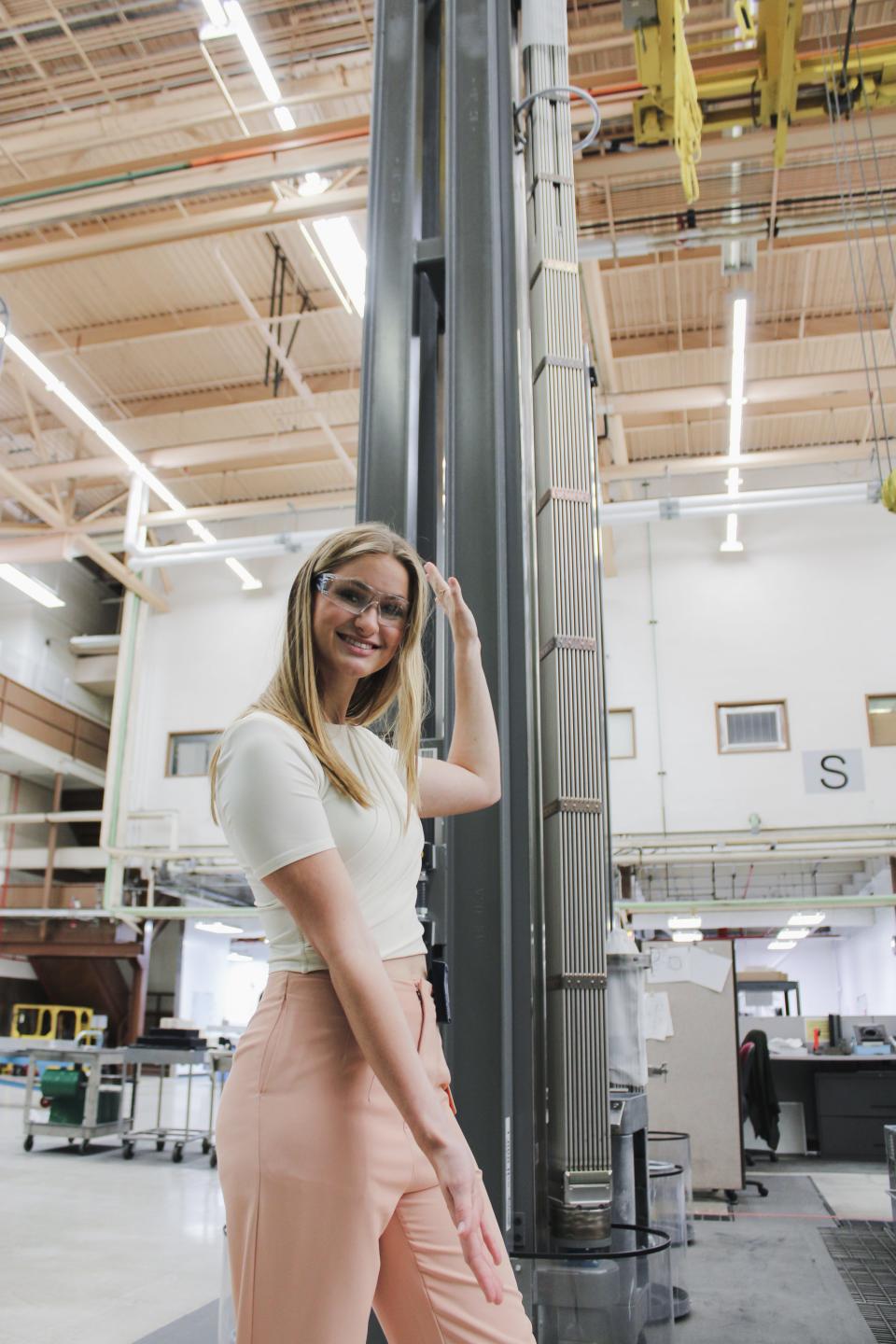
Stanke, who recently posted on social media from her post-reign vacation in Key West, said she plans to continue to travel and talk about nuclear power even as she takes on a job as a core design engineer at Constellation Energy in Pennsylvania. Constellation Energy is operator of the nation's largest fleet of nuclear reactors.
Stanke graduated from the University of Wisconsin with a nuclear engineering degree just as her year as Miss America was ending.
"I'm excited for my generation to start taking control," Stake said on a Nuclear Energy Institute podcast in September. "Young people bring about a very unique perspective, where we grew up with politicians who make empty promises. We grew up with this impending doom of climate change. We grew up wanting to do better than our parents. And I am so excited to see, as the workforce continues to turn over, as people who are currently in the workforce plant those important first seeds to watch the nuclear industry grow, to watch this political climate change in support of nuclear.
"We need that to be happening right now and today. … I'm excited for fresh perspectives and fresh approaches with a high drive to follow through and a high drive to hold people accountable. That is the one thing I am so excited for, because we are seeing so many different types of technology. We are seeing so many different types of nuclear science come to light, whether it's SMRs, micro reactors, fast breeder reactors, all of these different things that are starting to happen. We need that high drive and that level of accountability in order to make those things actually come to life and be successful."
Herman said he is hopeful that nuclear will be embraced more.
“I’m incredibly optimistic. I think that folks are really starting to see that nuclear is really good and needed,” he said. “The electricity demand is going to go up. Nuclear produces the most power without putting carbon dioxide in the air. Primarily nuclear is going to be the staple in our energy grid if we’re going to meet these carbon goals we’ve set by 2050.”
This article originally appeared on Naples Daily News: Nuclear power continues to power parts of Florida, US and world

